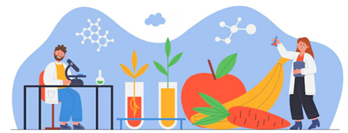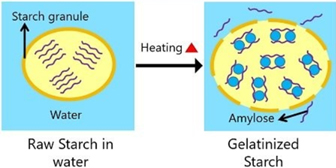No products
Cooking is often seen as an art, but at its core, it is deeply rooted in science. Understanding the principles of heat transfer and food chemistry can elevate your culinary skills and enhance the flavors and textures of your dishes. In this article, we'll explore the different methods of heat transfer, the role of temperature in cooking, and how food chemistry affects the final outcome of your meals.
▎The Three Methods of Heat Transfer
Heat transfer in cooking occurs through three primary methods: conduction, convection, and radiation. Each method plays a crucial role in how food is cooked and how flavors are developed.

▎1. Conduction
Conduction is the direct transfer of heat from one substance to another through physical contact. When you place a pan on a burner, heat travels from the burner to the pan and then to the food inside it. This method is most commonly used in stovetop cooking techniques such as frying, sautéing, and searing.
Key Points:
• Good conductors of heat include metals like copper, aluminum, and stainless steel.
• The thickness and material of cookware can affect how quickly and evenly heat is conducted.
• To achieve optimal results, it's essential to preheat your cookware before adding food.
▎2. Convection
Convection involves the movement of heat through fluids (liquids or gases). In cooking, this method is often used in baking and roasting. When air or liquid is heated, it becomes less dense and rises, while cooler, denser fluid sinks. This creates a circulation pattern that helps distribute heat evenly throughout the cooking medium.
Key Points:
• Convection ovens use fans to circulate hot air, leading to more even cooking and browning.
• Boiling and steaming are examples of convection in action, where water transfers heat to food.
• Stirring a pot while cooking can enhance convection currents, ensuring that all ingredients cook uniformly.
▎3. Radiation
Radiation is the transfer of heat through electromagnetic waves. This method is commonly seen in grilling and broiling, where food is exposed to high temperatures from an open flame or heating element. Unlike conduction and convection, radiation does not require direct contact between the heat source and the food.
Key Points:
• Infrared radiation is used in toaster ovens and broilers to cook food quickly.
• Grilling imparts a unique flavor due to the Maillard reaction that occurs when meat is exposed to high heat.
• It's important to monitor food closely when using radiant heat to prevent burning.
▎The Role of Temperature in Cooking
Temperature plays a pivotal role in determining how food cooks and its final texture and flavor. Different foods have specific temperature thresholds that affect their chemical composition.
▎Cooking Temperatures
1. Low Temperatures (Below 200°F / 93°C): Ideal for slow cooking methods like braising and simmering. These methods allow flavors to meld without toughening proteins.
2. Medium Temperatures (200°F - 350°F / 93°C - 177°C): Suitable for baking, roasting, and sautéing. This range allows for even cooking while promoting browning through the Maillard reaction.
3. High Temperatures (Above 350°F / 177°C): Used for frying and searing. High temperatures create a crispy exterior while sealing in moisture.
▎The Maillard Reaction
One of the most important chemical reactions in cooking is the Maillard reaction, which occurs when proteins and sugars in food react under heat. This reaction is responsible for the browning of meats, baked goods, and roasted vegetables, contributing to complex flavors and aromas.
Key Points:
• The Maillard reaction typically begins around 285°F (140°C) and intensifies with higher temperatures.
• It’s crucial to achieve the right balance between heat and time; too much heat can lead to burnt flavors, while too little may not develop the desired taste.
▎Food Chemistry: The Building Blocks of Flavor
Understanding food chemistry helps cooks manipulate ingredients to achieve desired textures and flavors. Here are a few key concepts:

▎Emulsification
Emulsification is the process of mixing two immiscible liquids (like oil and water) into a stable mixture. This technique is essential for sauces like mayonnaise or vinaigrettes. Emulsifiers, such as egg yolks or mustard, help stabilize these mixtures by reducing surface tension.

▎Gelatinization
Gelatinization occurs when starches absorb water and swell during cooking. This process thickens sauces and gives body to dishes like risotto or custards. The right temperature and time are crucial for achieving optimal gelatinization without creating a gummy texture.

▎Denaturation
Denaturation refers to the alteration of proteins' structure when exposed to heat, acid, or mechanical action. This process transforms raw ingredients—such as eggs—into firm textures when cooked. Understanding denaturation helps cooks control the tenderness of meats or the fluffiness of baked goods.

Cooking is both an art form and a science that requires an understanding of heat transfer and food chemistry. By grasping these fundamental principles, you can improve your culinary skills and create dishes with depth of flavor and perfect texture. Whether you're sautéing vegetables, baking bread, or grilling meat, remember that every step in the cooking process involves scientific principles that can be mastered with practice and curiosity. So next time you step into the kitchen, think about the science behind your cooking—your taste buds will thank you!